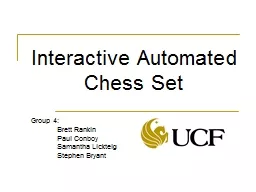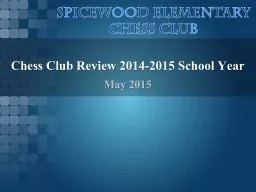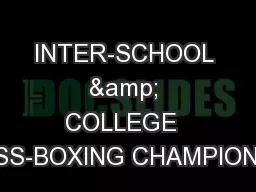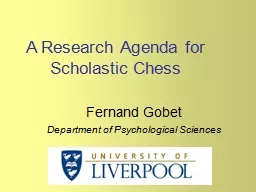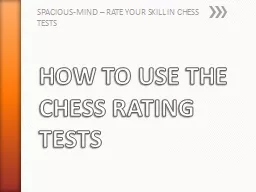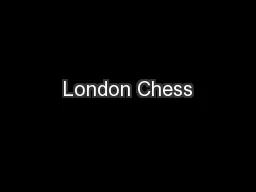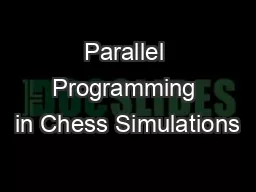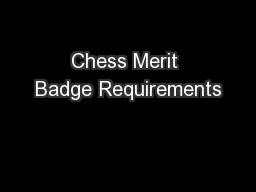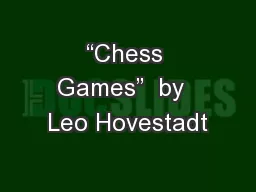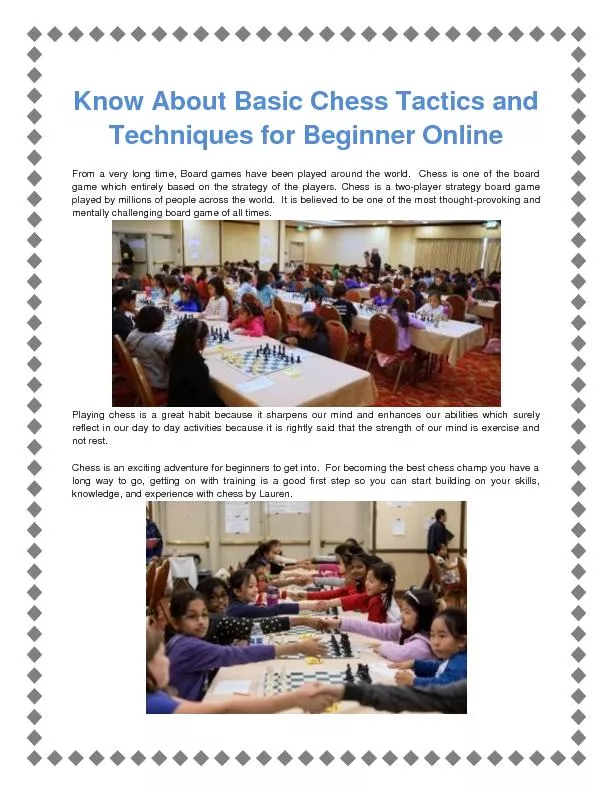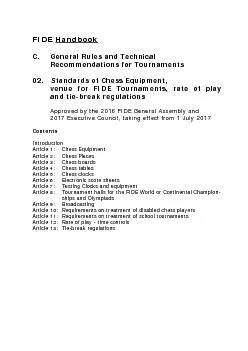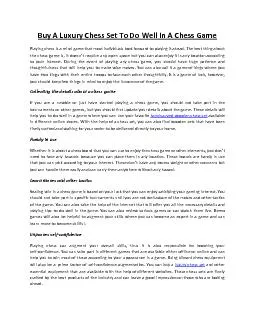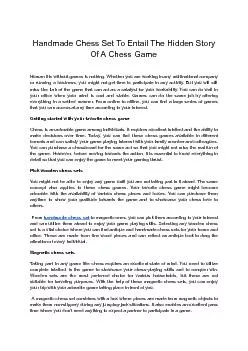PPT-Interactive Automated Chess Set
Author : giovanna-bartolotta | Published Date : 2016-03-01
Group 4 Brett Rankin Paul Conboy Samantha Lickteig Stephen Bryant Goals To create a portable interactive chess board where gameplay will be fully automated
Presentation Embed Code
Download Presentation
Download Presentation The PPT/PDF document "Interactive Automated Chess Set" is the property of its rightful owner. Permission is granted to download and print the materials on this website for personal, non-commercial use only, and to display it on your personal computer provided you do not modify the materials and that you retain all copyright notices contained in the materials. By downloading content from our website, you accept the terms of this agreement.
Interactive Automated Chess Set: Transcript
Download Rules Of Document
"Interactive Automated Chess Set"The content belongs to its owner. You may download and print it for personal use, without modification, and keep all copyright notices. By downloading, you agree to these terms.
Related Documents

